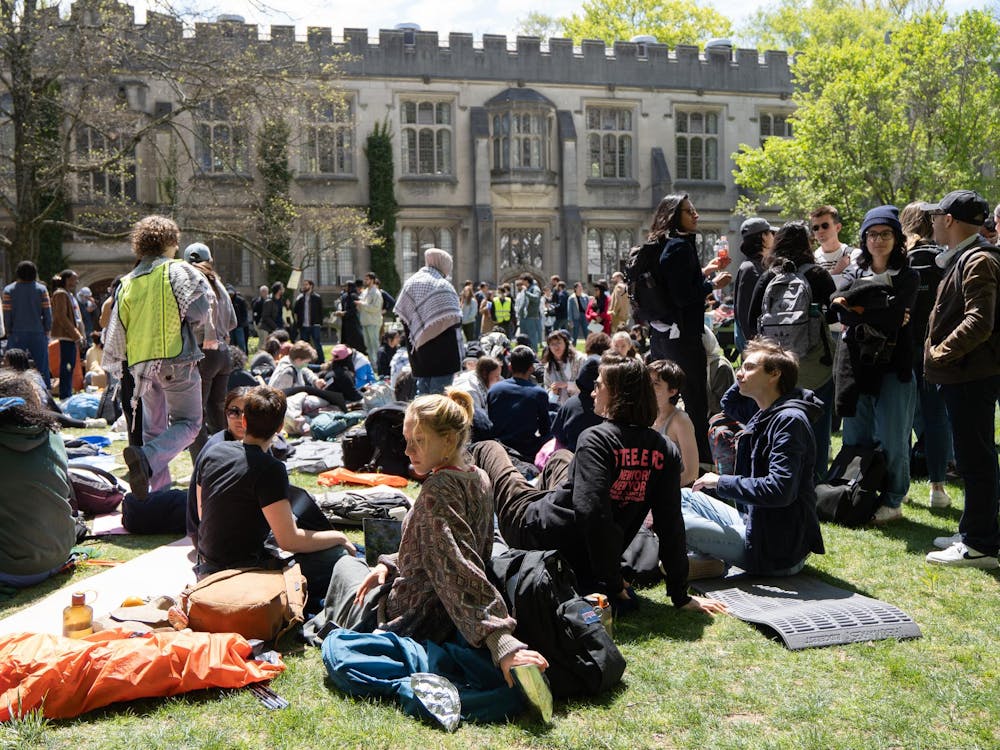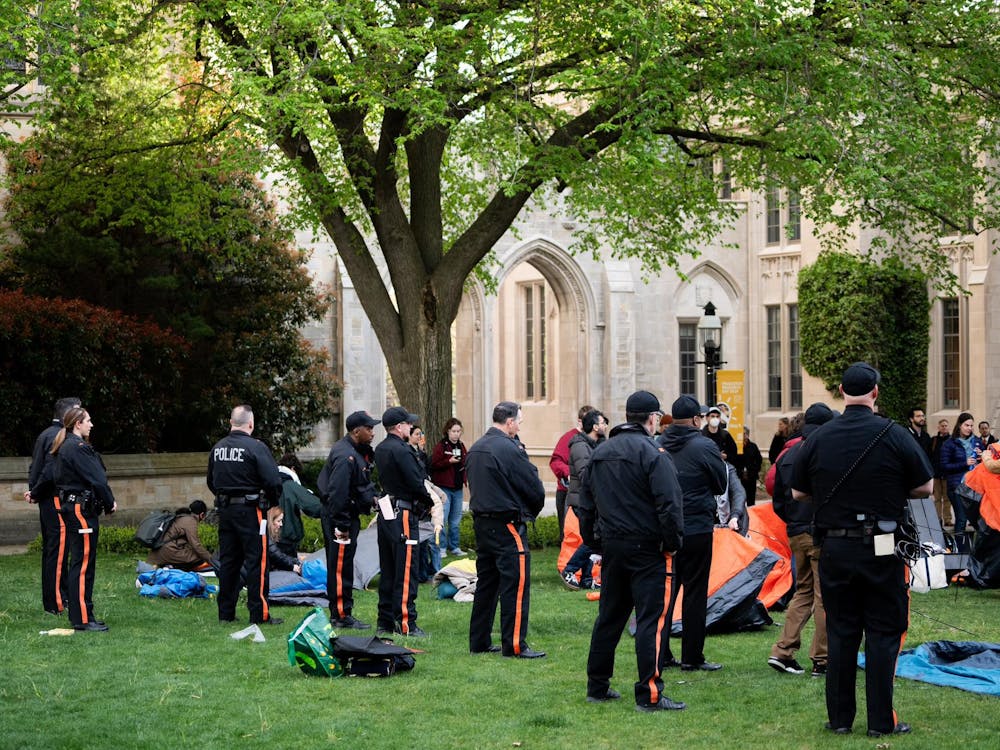This Monday marks the start of the second half of the fall semester. For many students, the weeks between fall break and winter break are associated with paper deadlines and winter formals on Prospect Avenue. Deadlines and festivities aside, the entire Princeton community will experience increasingly cold and wet weather in the coming weeks. Poor drainage on campus exacerbates the effects of rain and snow on the experiences of students and faculty, alike. The Editorial Board recommends that the University take action to decrease flooding on or near high-traffic sidewalks and walkways on campus.
Poor walkway drainage poses a number of problems for the many members of the Princeton community. First, flooded walkways slow foot traffic, thereby increasing the time needed to traverse campus. Second, large puddles can damage non-waterproof footwear and introduce additional expenses that disproportionately affect students who are unable to purchase expensive winter gear. Third, collections of water can freeze during the winter and create dangerous, slippery surfaces for unsuspecting pedestrians and bikers. Thus, addressing this issue is more than a matter of convenience. It is critical for student, faculty and visitor safety.
The University is already taking steps to improve the physical features of campus with the 2026 campus plan. The Board encourages the Campus Planning Steering Committee to prioritize walkway and sidewalk improvements so that all popular sidewalks and walkways become safer sooner, rather than later. Last year’s Campus Mapping Survey, which asked students to provide data about popular destinations and paths used on campus, should provide critical information to administrators for prioritizing which sidewalks and walkways should be fixed. While efforts to improve walkability in the east and west ends of campus are admirable, the University should pay special attention to the most visited areas of campus. The pavements on each side of Prospect Avenue, for example, are walked on by thousands of students each week. Nonetheless, they end up flooded or frozen over whenever it rains or snows.
Additionally, the Board encourages students to take an active role in campus design and maintenance. The University has created an interactive blog to disseminate information and solicit input for the 2026 Campus Plan. Students concerned about flooded walkways and other infrastructure-related problems should alert the administration by voicing their opinions in the comments section of the blog. Improving Princeton’s campus requires contributions from all parties that stand to benefit from the 2026 Campus Plan. Administrators are aware of the most obvious problems, but students need to advocate for themselves and future Princetonians.
While the 2026 Campus Plan introduces goals that are placed on either a 10- or 30-year time horizon, the University should not wait to make immediate improvements to campus walkways and sidewalks. Repaving and redesigning pathways this summer would shorten commute times and decrease the number of wet shoes and sprained ankles on campus.
The Editorial Board is an independent body and decides its opinions separately from the regular staff and editors of The Daily Princetonian. The Board answers only to its Chair, the Opinion Editor and the Editor-in-Chief.








